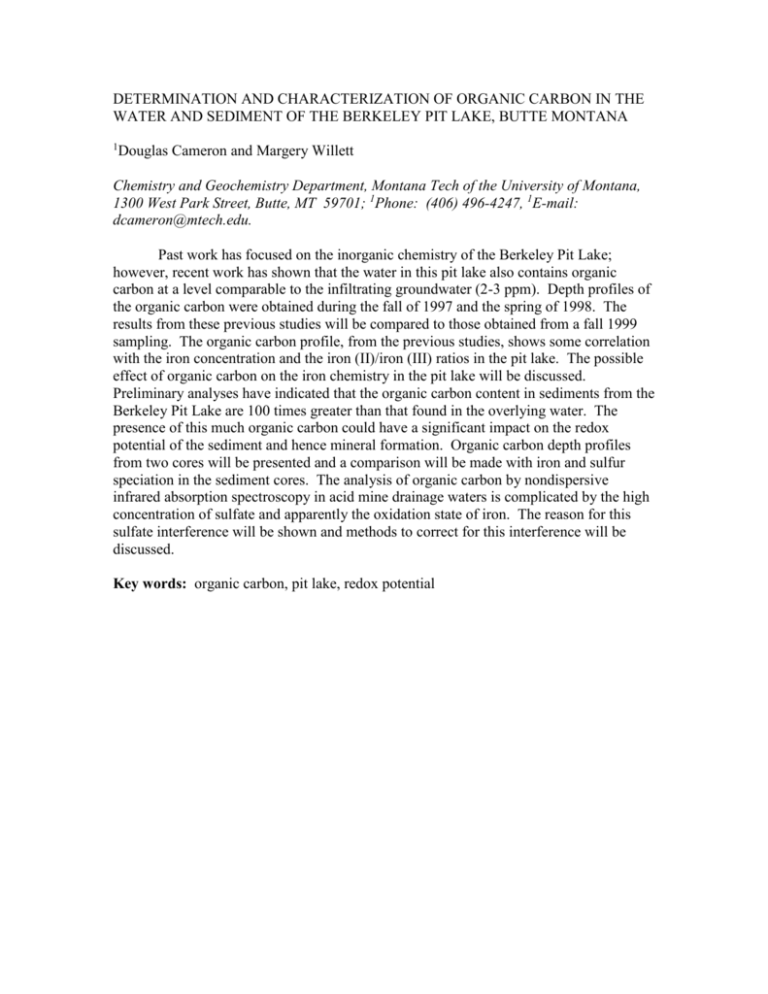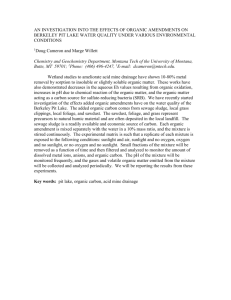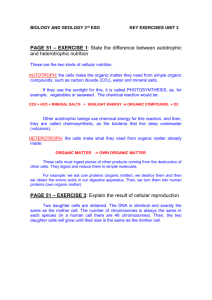Determination and Characterization of Organic Carbon in the Water
advertisement

DETERMINATION AND CHARACTERIZATION OF ORGANIC CARBON IN THE WATER AND SEDIMENT OF THE BERKELEY PIT LAKE, BUTTE MONTANA 1 Douglas Cameron and Margery Willett Chemistry and Geochemistry Department, Montana Tech of the University of Montana, 1300 West Park Street, Butte, MT 59701; 1Phone: (406) 496-4247, 1E-mail: dcameron@mtech.edu. Past work has focused on the inorganic chemistry of the Berkeley Pit Lake; however, recent work has shown that the water in this pit lake also contains organic carbon at a level comparable to the infiltrating groundwater (2-3 ppm). Depth profiles of the organic carbon were obtained during the fall of 1997 and the spring of 1998. The results from these previous studies will be compared to those obtained from a fall 1999 sampling. The organic carbon profile, from the previous studies, shows some correlation with the iron concentration and the iron (II)/iron (III) ratios in the pit lake. The possible effect of organic carbon on the iron chemistry in the pit lake will be discussed. Preliminary analyses have indicated that the organic carbon content in sediments from the Berkeley Pit Lake are 100 times greater than that found in the overlying water. The presence of this much organic carbon could have a significant impact on the redox potential of the sediment and hence mineral formation. Organic carbon depth profiles from two cores will be presented and a comparison will be made with iron and sulfur speciation in the sediment cores. The analysis of organic carbon by nondispersive infrared absorption spectroscopy in acid mine drainage waters is complicated by the high concentration of sulfate and apparently the oxidation state of iron. The reason for this sulfate interference will be shown and methods to correct for this interference will be discussed. Key words: organic carbon, pit lake, redox potential





